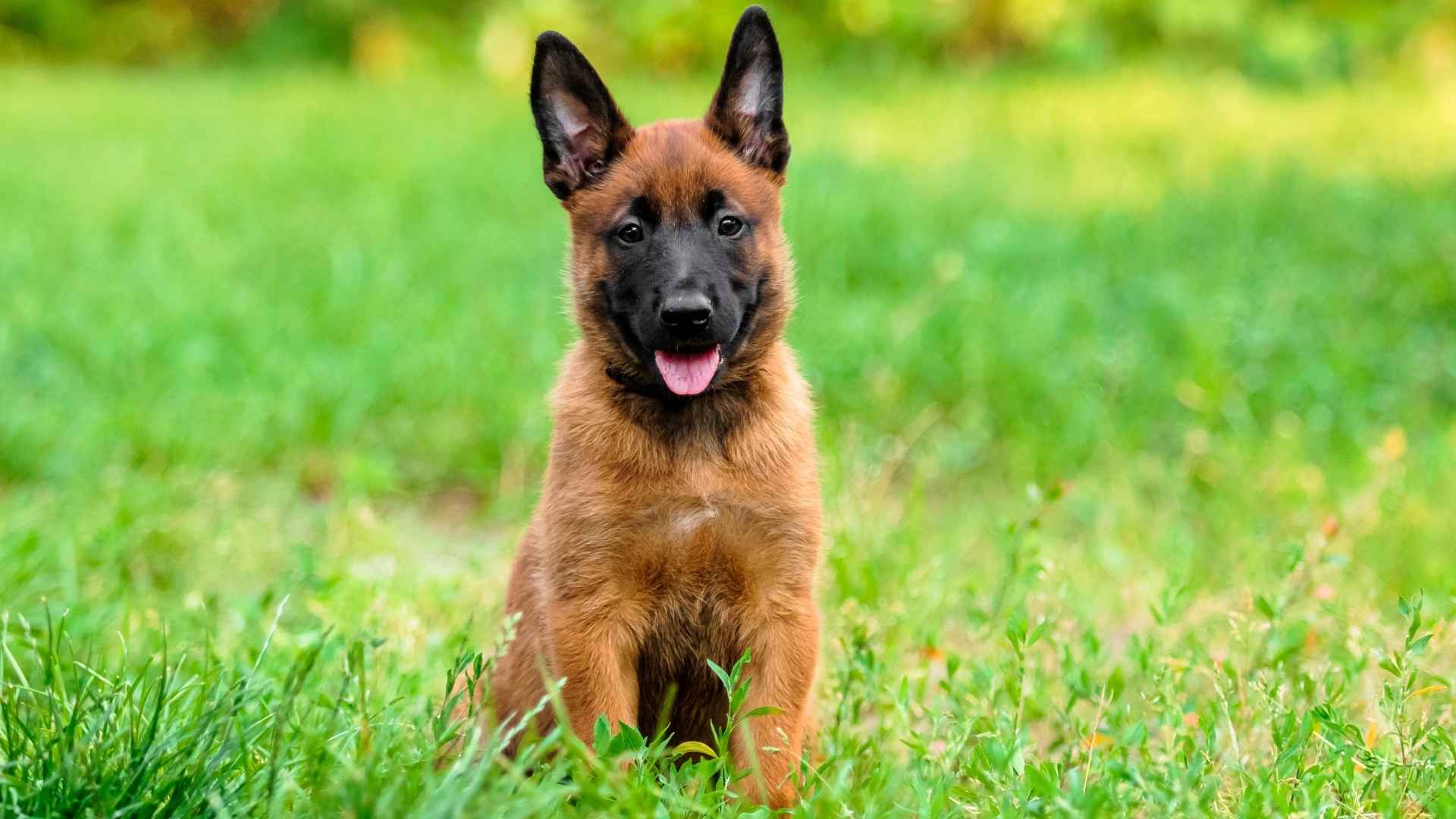Did you know that the ancient Romans used puppies as early warning systems during invasions? Long before high-tech security, small but spirited pups stood as the first line of defense. Today, the idea of a protective puppy may sound like a paradox—after all, who can resist those floppy ears and innocent eyes? But behind that sweet face often lies a brave little heart ready to bark loudly at shadows and stand guard over its favorite humans.
“Guard Puppy Breeds” might seem like a cute concept, but it’s also a serious one. Some pups are born with natural instincts to protect, watch, and alert—even as youngsters. Whether you’re looking for a loyal watchdog to grow up with your family or simply curious about breeds that offer both cuddles and courage, this guide is for you. Get ready to meet the pups that prove you don’t have to be big to be bold!
Guard Puppy Dog Breeds
1. Doberman Pinscher
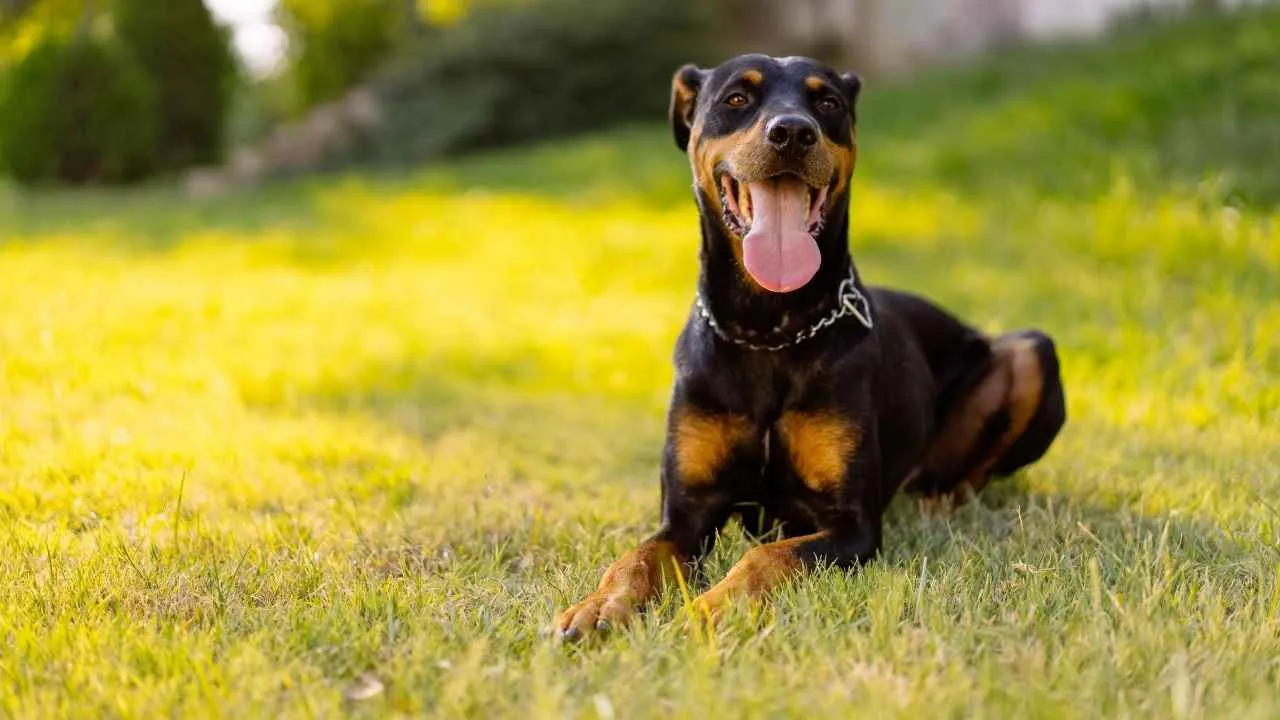
Bred in the late 19th century by Karl Friedrich Louis Dobermann in Apolda, Germany, the Doberman Pinscher was developed as a fearless protector. Combining intelligence, loyalty, and strength, this breed was purposefully designed to guard.
Dobermans are known for their muscular, compact bodies and regal posture. Standing 24 to 28 inches tall at the shoulder, they’re built for speed, strength, and endurance.
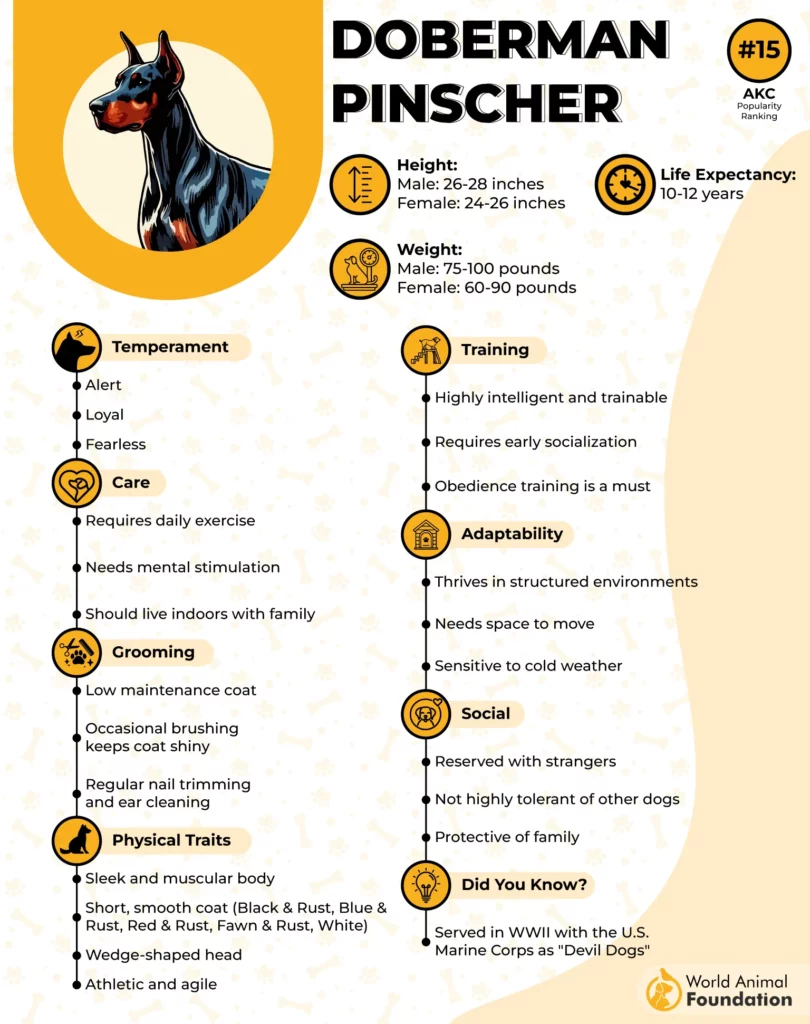
An Excellent Guard Dog Breed: Roles & Abilities
Thanks to their sharp minds and strong work ethic, Dobermans thrive in roles that demand focus and bravery. Britannica states that they’re widely used in:
Police and military operations
Search and rescue missions
Guard and protection services
But beyond their jobs, they’re loyal companions who excel at obedience and agility competitions.
The Heart Beneath the Armor: Temperament & Personality
Despite their serious reputation, Dobermans are affectionate family members, playful, and deeply devoted to their loved ones. Their temperament is a rare blend of docility and protectiveness—alert when necessary, gentle when at ease.
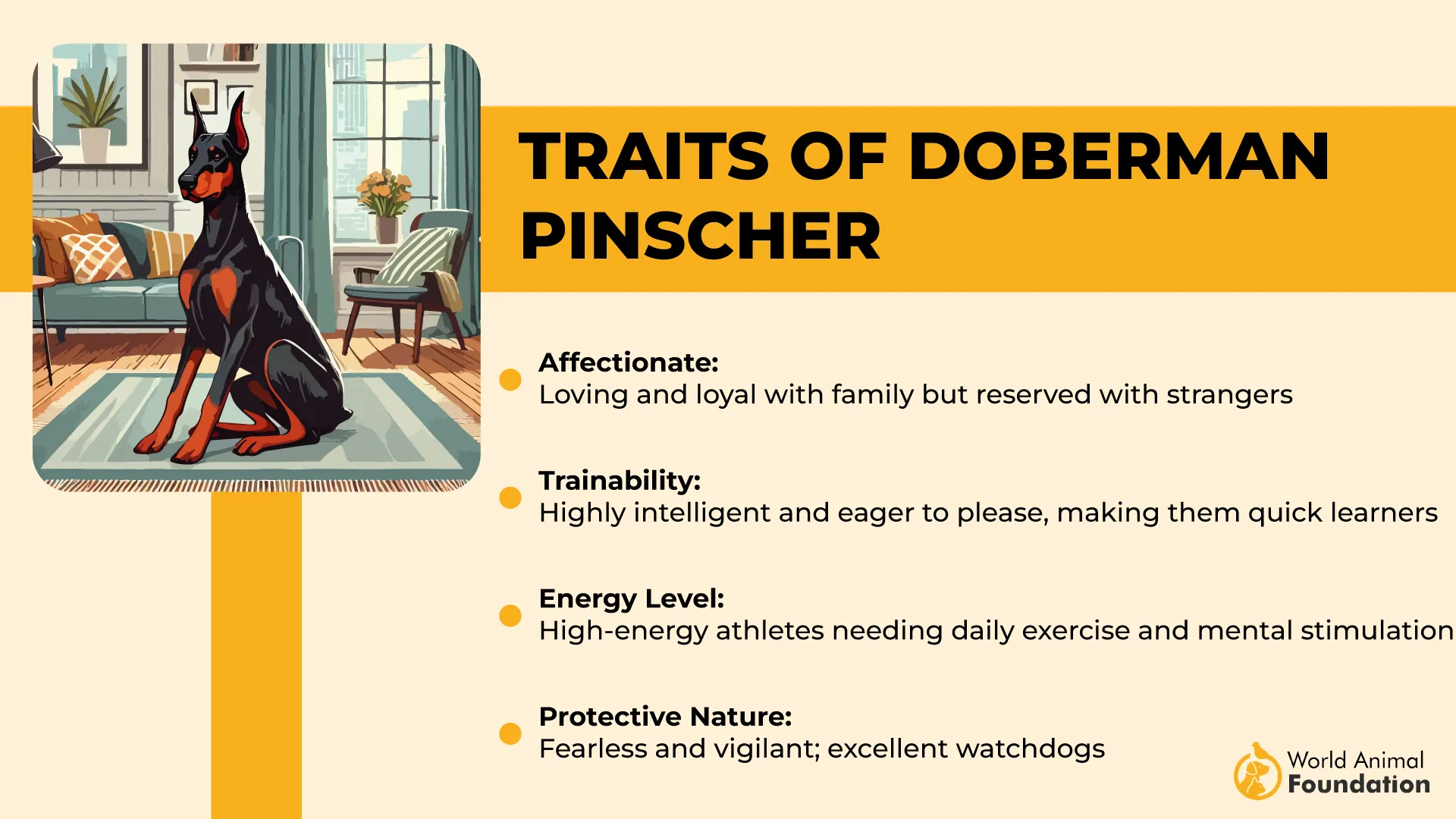
Dobermans love a challenge. Their intelligence makes them easy to train, and they enjoy learning new commands or tricks. Mental stimulation and regular exercise are crucial to keeping them happy and well-behaved.
2. German Shepherd
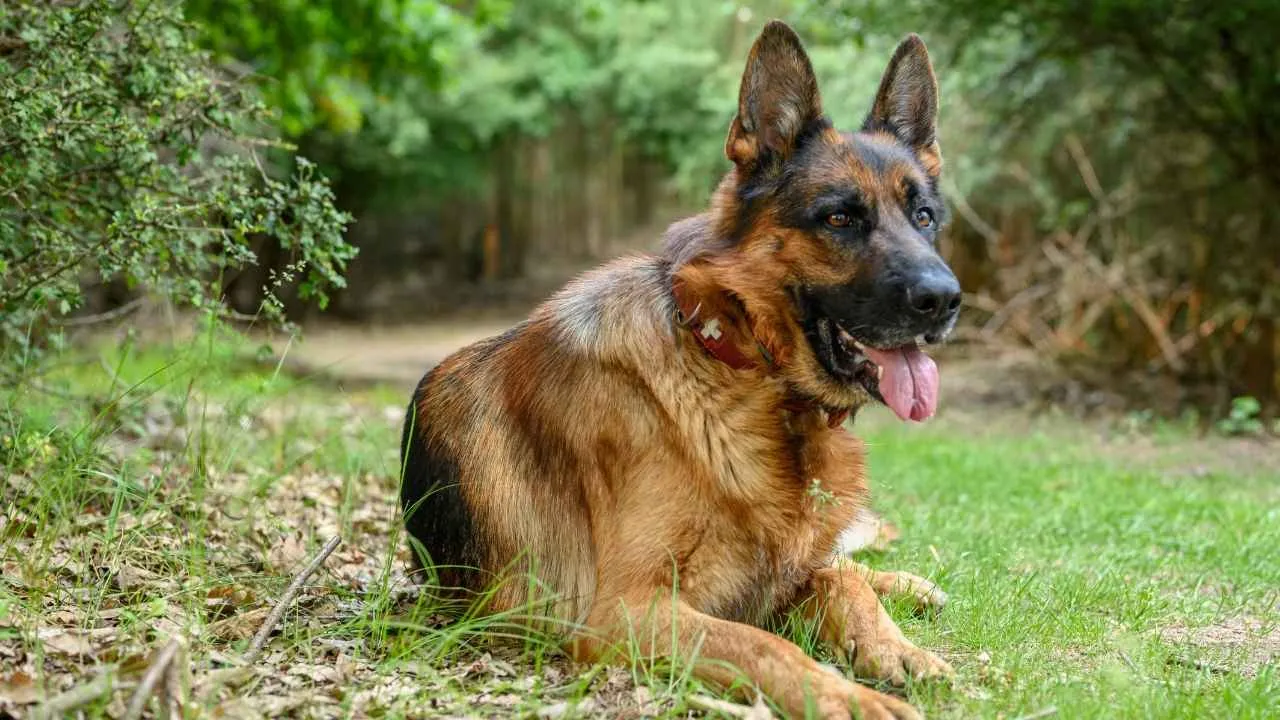
Bred in the late 19th century for herding and protection work, the German Shepherd quickly became one of the world’s most respected working dogs. Known for their intelligence, loyalty, and courage, they’ve proven themselves in fields ranging from law enforcement to search and rescue.
With a muscular frame and agile movement, German Shepherds are as powerful as they are graceful. Standing up to 26 inches tall, they command attention with their noble bearing and focused gaze.
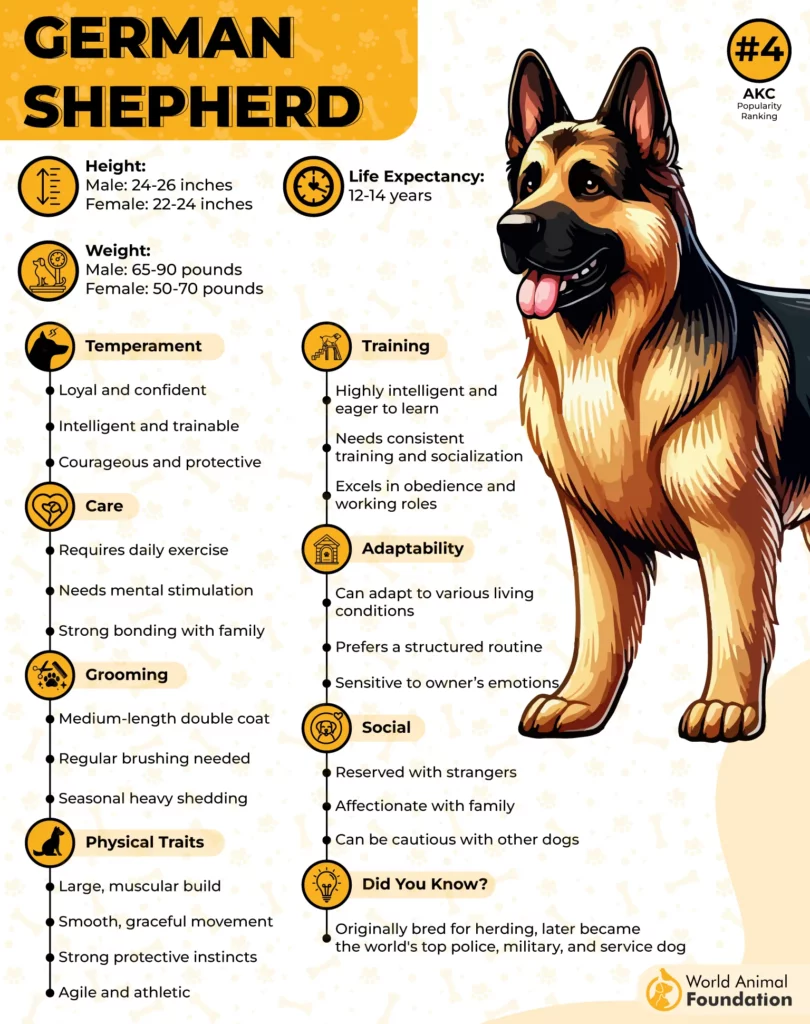
Brave Hearts with a Sweet Nature: Temperament & Personality
German Shepherds are a mix of toughness and tenderness. They’re known to be fearless protectors, yet incredibly affectionate with their families. Though naturally wary, early socialization can help them become well-mannered and confident in social settings.
Trainable & Tenacious: Intelligence in Action
One of the most intelligent dog breeds, German Shepherds thrive when given tasks. They pick up commands quickly and enjoy being mentally stimulated.
Best training practices include:
Consistency and positive reinforcement
Early socialization to curb overprotectiveness
Interactive games to challenge their minds
German Shepherds are high-energy dogs that require plenty of daily physical and mental exercise. Without it, they can become restless and even develop behavioral issues.
3. Bullmastiff
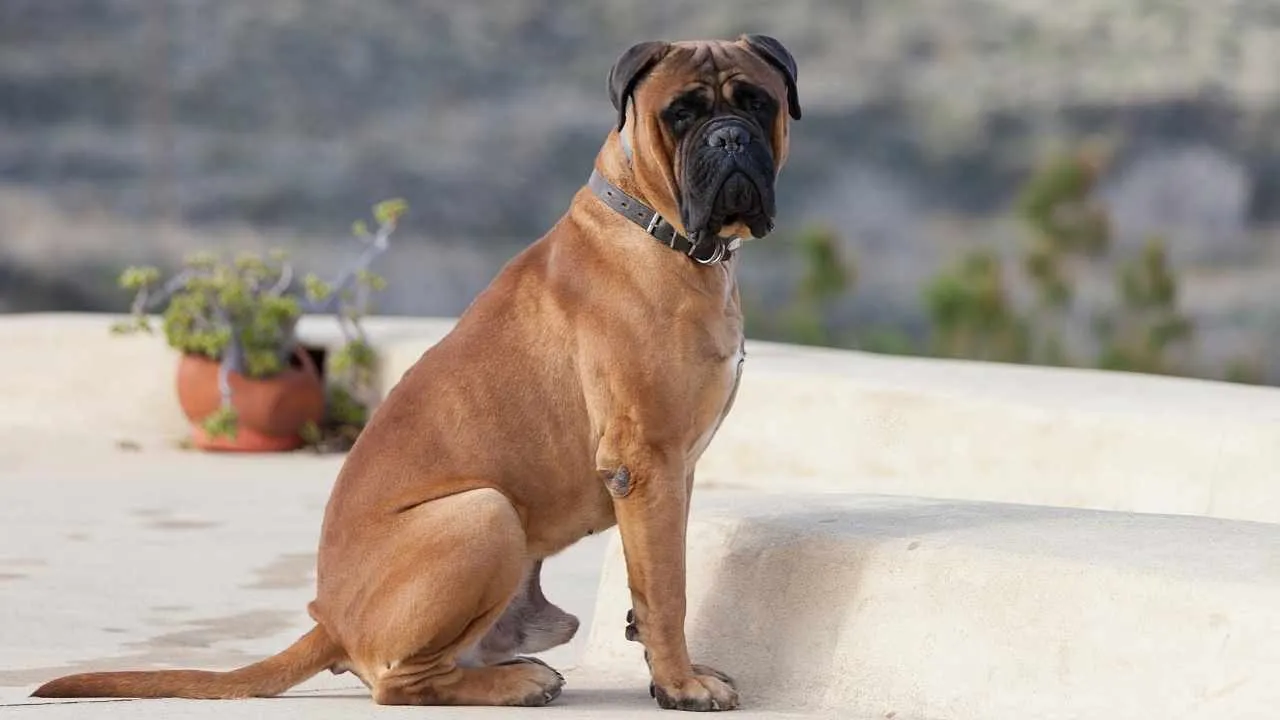
Developed in 19th-century England, the Bullmastiff was bred as a powerful guard dog capable of silently tracking and detaining poachers. A cross between the Bulldog and Mastiff, it combines the fearlessness of the former with the size and strength of the latter.
With a broad head, dark eyes, and V-shaped ears, the Bullmastiff carries an unmistakable air of confidence and intelligence. Its short, dense coat is low-maintenance but contributes to its sturdy, rugged appearance.
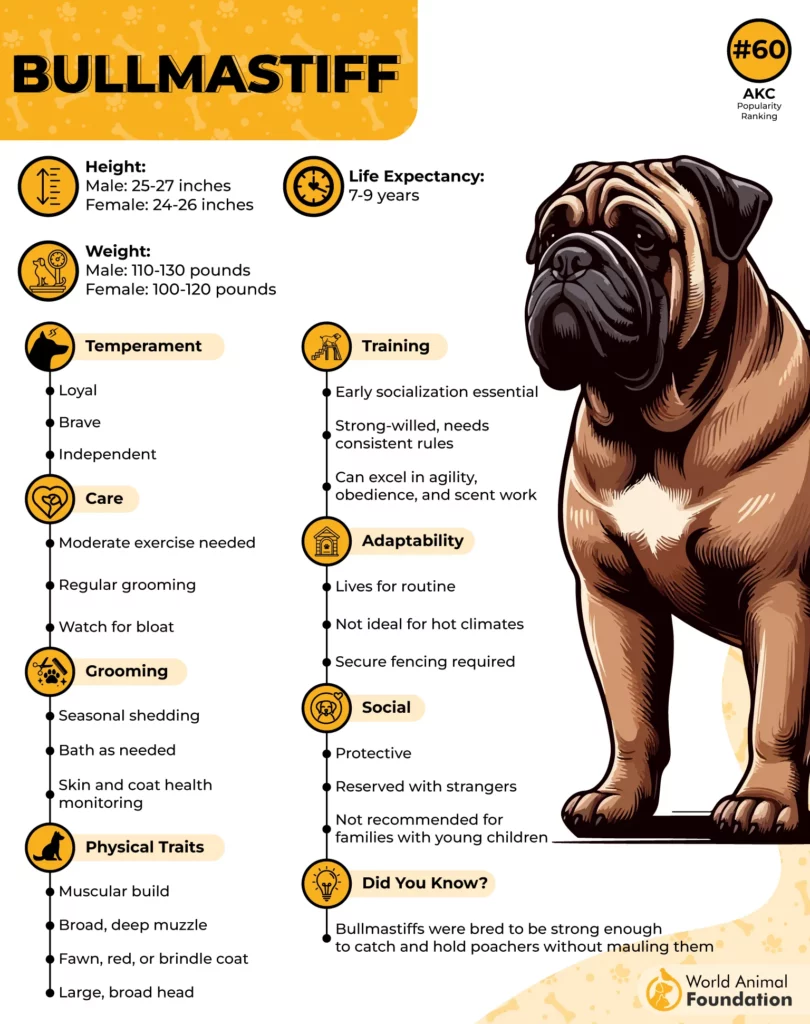
Gentle at Heart: Temperament & Behavior
Despite their guarding legacy, Bullmastiffs are loyal, calm, and affectionate companions at home. They bond deeply with their families and can be surprisingly gentle, though their size requires mindful interaction with small children.
Mind & Muscle: Training and Exercise Needs
While Bullmastiffs aren’t overly energetic, they do need regular physical and mental stimulation to prevent boredom and destructive habits. Consistent training from an early age helps shape a well-mannered adult dog.
Training tips:
Start early with basic obedience
Reinforce boundaries (e.g., no jumping or furniture climbing)
Keep sessions short but engaging
From Gamekeeper’s Ally to Family Protector
Originally trained to track quietly and subdue poachers without mauling, today’s Bullmastiffs retain that calm vigilance. They are exceptional guard dogs—protective without being unnecessarily aggressive, making them both capable protectors and devoted family members.
4. Rottweiler
The Rottweiler is one of the oldest working breeds, with roots tracing back to Roman mastiffs. Developed in the German town of Rottweil, they were initially used for herding cattle, pulling butcher’s carts, and later for military, police, and search-and-rescue roles.
Rottweilers are medium-to-large dogs with a powerful, muscular build. Their short, coarse coat and soft undercoat, especially around the neck and thighs, require regular grooming to maintain their sharp appearance.
Gentle Giants: Temperament & Personality
Despite their bad reputation, Rottweilers are not inherently aggressive. With proper training, they are loyal, affectionate, and playful, thriving on human interaction. They can develop behavioral issues if left alone for too long, but with the right attention, they’re loving companions.
A Rottweiler’s strong guarding instincts make them an excellent watchdog, confident and fearless when they sense a threat to their family.
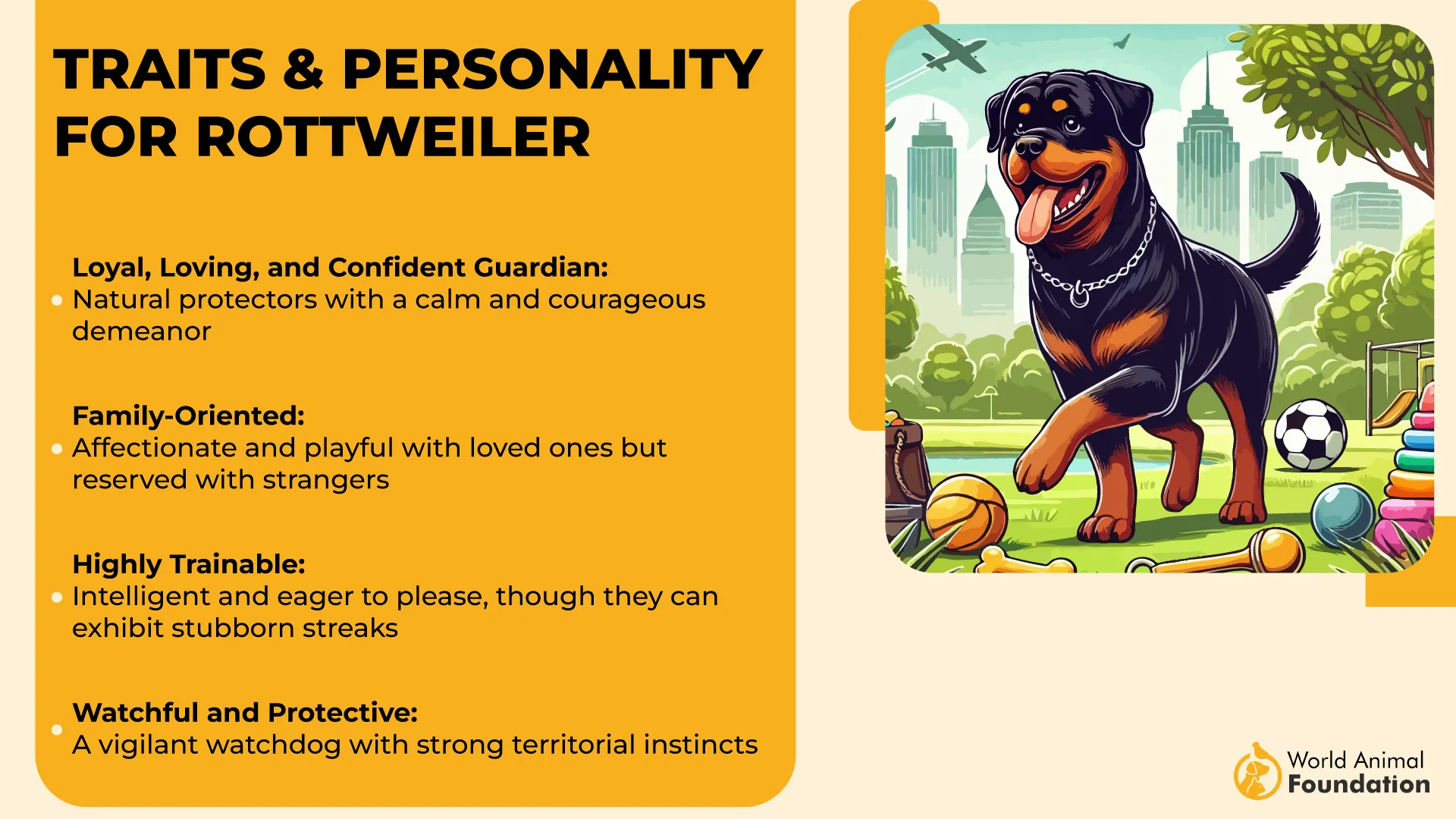
Smart & Strong: Trainability and Intelligence
With a deep work ethic and intelligence, Rottweilers excel in various roles, including police K9 units, therapy work, and dog sports. They respond well to confident and consistent training, making them versatile and highly trainable dogs.
5. Akita
Originating from the cold, mountainous regions of northern Japan, the Akita is a powerful working dog once used for hunting large game and guarding royalty. In 1931, it was officially declared a “natural monument” by the Japanese government, symbolizing strength, courage, and loyalty.
Distinctive Appearance: Built for the Cold
Akitas are large, muscular dogs with a bold presence and thick double coat designed for harsh weather. Their physical traits are both striking and functional.
Key features:
Broad head with erect, pointed ears
Large curled tail resting over the back
Colors: White, brindle, pinto — often with a dark facial mask (except in white Akitas)
Size:
Males: 26–28 inches tall, ~110 lbs
Females: 24–26 inches tall, ~80 lbs
Their dense undercoat keeps them warm in frigid conditions, making them thrive in cooler climates.
Cold Weather Companions
Pawlicy advisor states Akitas are an energetic breed and naturally more active during cold months. Their thick fur allows them to enjoy brisk outdoor activities and winter play without discomfort.
They’re ideal for:
Snow hikes and chilly morning walks
Active owners who live in temperate or cold regions
Families looking for a hardy, resilient companion
Strong-Willed but Rewarding: Personality & Temperament
Akitas are extremely intelligent, quiet, and reserved, often forming deep bonds with their families. However, their independent streak can make them challenging for novice owners.
Personality traits:
Naturally protective and territorial
Calm and affectionate with family
Wary of strangers without being aggressive
Often prefer to be the only dog in the home
Training and Versatility
With proper training, Akitas can excel in a variety of roles—from guard and police work to emotional support and agility competitions. They respond best to experienced handlers who provide structure and firm, respectful leadership.
6. Cane Corso
Muscular, confident, and deeply loyal, the Cane Corso is a working dog with ancient roots and a commanding presence. Originally bred for protection and performance, this Italian powerhouse is as watchful as it is devoted.
Their name comes from Latin “cohors”, meaning “guardian” or “protector.” Despite facing near extinction after the World Wars, the breed was successfully revived in the 1970s in Italy.
Built for Strength and Defense
The Cane Corso’s body tells the story of its purpose—guarding, hunting, and working with stamina and strength.
Distinct physical traits:
Stocky, athletic build with a broad chest and powerful frame
Large, square head and expressive eyes
Short, stiff coat in black, gray, fawn, red, or brindle
Traditionally cropped ears and docked tail (where legal)
Though they shed moderately, they are also heavy droolers—be prepared for a little slobber!
Ancient Roots: From Roman Battlefields to Italian Farms
The Cane Corso descends from Molossian war dogs once used by the Roman Empire. After the fall of Rome, these dogs found new roles:
Herding livestock
Guarding estates and farms
Hunting wild boars
Temperament: Loyal, Bold, and Protective
The Cane Corso is not a casual companion—this breed needs structure, respect, and experienced handling.
Key personality traits:
Naturally suspicious of strangers
Deeply loyal and affectionate toward their family
Independent and strong-willed, requiring confident leadership
Excellent watchdogs, alert and instinctively protective
7. Caucasian Shepherd Dog
Bred in the rugged Caucasus region, the Caucasian Shepherd Dog—also known as the Caucasian Ovcharka or Caucasian Sheepdog—has protected livestock from predators like wolves and bears for centuries. Today, it continues to serve as a loyal guardian of homes and families.
Physical highlights:
Males weigh over 110 lbs, females over 100 lbs
Muscular build with strong bones and a deep chest
Thick, weather-resistant medium-to-long coat in various colors
Bold, Loyal, and Protective
This breed is deeply devoted to its family, yet highly suspicious of strangers. While affectionate with those it trusts, the Caucasian Shepherd will not hesitate to protect its people or territory.
Temperament at a glance:
Loyal and affectionate with family and other household pets
Territorial and alert—an excellent natural watchdog
Independent and strong-willed, needing confident leadership
Mountain vs. Steppe Types
Two primary variations exist within the breed:
Mountain Type:
Long coat
Heavier build
Suited for cold, rugged terrain
Steppe Type:
Shorter coat
Lighter and more agile
Adapted to milder, flatter regions
Training the Independent Thinker
With high intelligence and an independent streak, the Caucasian Shepherd can be challenging to train, especially for beginners.
Training essentials:
Begin early socialization to reduce aggression or reactivity
Use firm, consistent, and positive reinforcement methods
Avoid harsh corrections—they respond better to calm authority
Engage in mental stimulation to prevent boredom-related behavior
8. Giant Schnauzer
The Giant Schnauzer is the largest of the schnauzer trio, bred in Germany for herding and farm work. With their sharp intelligence, energetic spirit, and powerful presence, these dogs thrive under experienced ownership and structured training.
Though not truly “giant,” this breed is large, muscular, and built for stamina.
Males: 25.5–27.5 inches, 60–85 lbs
Females: Slightly smaller in both height and weight
Key physical features:
Strong, confident stance
Distinctive beard and eyebrows
Dense coat that grows hair instead of fur—potentially easier on allergy sufferers
Grooming Needs: High-Maintenance but Worth It
The Giant Schnauzer’s dense coat requires commitment.
Grooming essentials:
Regular brushing to prevent mats and tangles
Professional trimming every few weeks (especially in warmer months)
The classic “schnauzer cut” highlights their expressive face and leg hair
Note: Though low-shedding, they can still carry allergens from the outdoors.
Loyal to the Core: The Velcro Dog
Nicknamed the “velcro dog,” this breed is deeply loyal and thrives on human interaction.
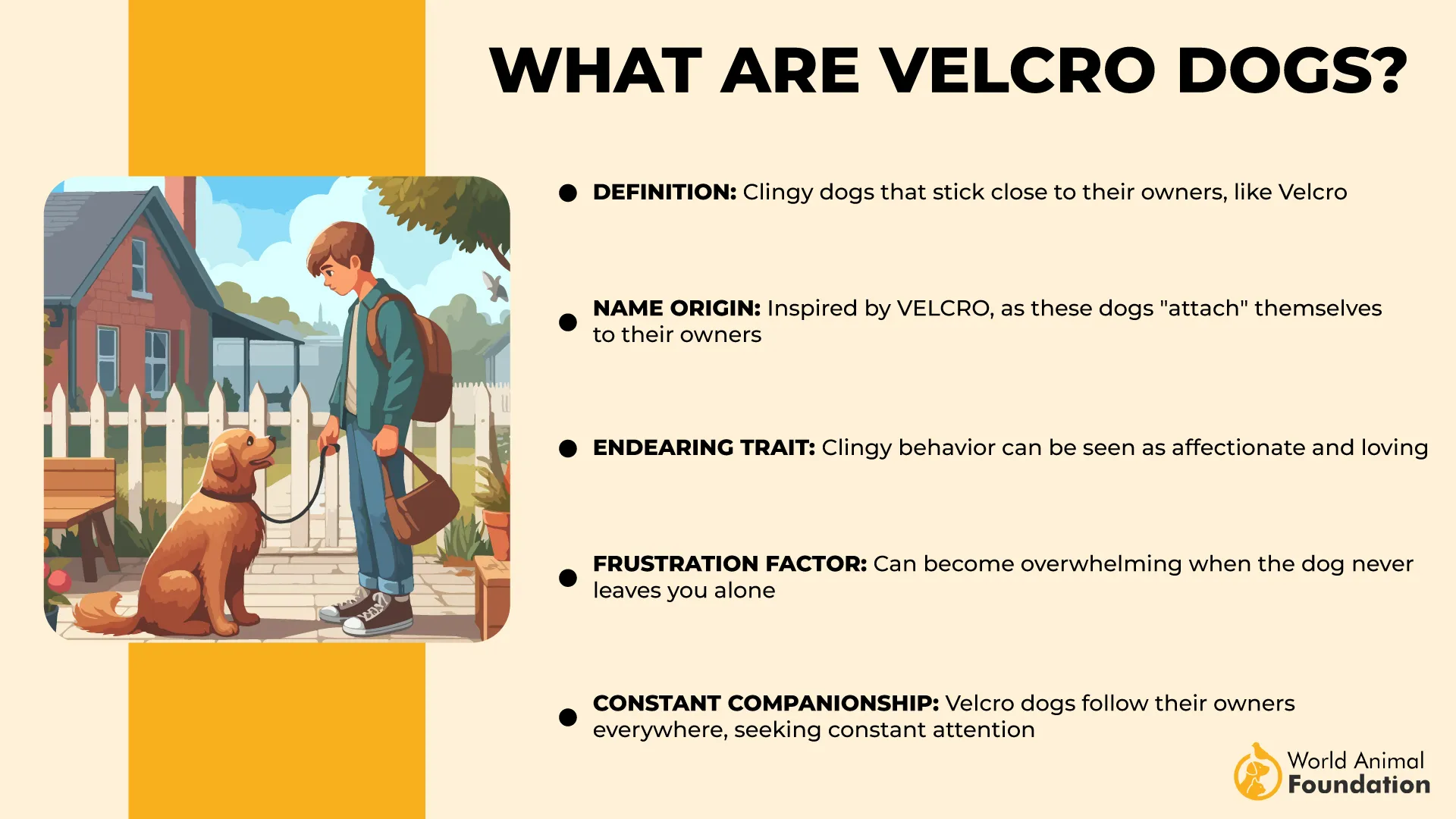
Temperament traits as shared by Purina:
Devoted and affectionate with family
Reserved and extremely protective around strangers
Vocal watchdog—prefers polite introductions before warming up
Highly Trainable, Occasionally Stubborn
Intelligent and eager to learn, Giant Schnauzers excel when mentally stimulated.
Training tips:
Respond well to consistent, positive reinforcement
Can be strong-willed, especially if bored or under-exercised
9. Tibetan Mastiff
The Tibetan Mastiff is a powerful, ancient breed originally developed to guard livestock and property in the remote Himalayas. With its lion-like appearance and deeply rooted protective instincts, this breed commands both admiration and respect.
Physical traits:
Weight: Often exceeds 100 lbs
Height: Up to 26 inches
Coat: Thick coat with a mane-like ruff around the neck
Colors vary, but the overall look is bold, heavyset, and majestic
Aloof but Devoted
Tibetan Mastiffs are calm and affectionate with loved ones but naturally guarded with outsiders.
Temperament snapshot:
Territorial and vigilant on home ground
Indifferent in neutral settings—not aggressive, just detached
Extremely loyal to trusted family members
Slow to mature
Males: Up to 5 years
Females: Around 4 years
Training: A Matter of Mutual Respect
This breed is not your average eager-to-please dog.
Training characteristics:
Highly intelligent, yet independent-minded
Dislike repetitive tasks or commands lacking purpose
Traditional treat-based obedience training is often ineffective
Requires firm, patient leadership based on trust
Conclusion
Selecting the right guard puppy breed is essential for effective protection. Breeds like the German Shepherd, Belgian Malinois, and Catahoula Leopard Dog are known for their natural protective instincts and intelligence, making them among the best guard dogs. Larger breeds like the Great Dane and American Bulldog offer strong deterrents, while Staffordshire Bull Terriers and Dutch Shepherds excel in protection training.
For first-time dog owners, it’s important to consider a breed’s temperament and training needs. Larger breeds require proper socialization to balance their protective nature with family life, while smaller breeds may offer personal protection but with less imposing presence. With the right training and care, these dogs provide both loyal companionship and security.


